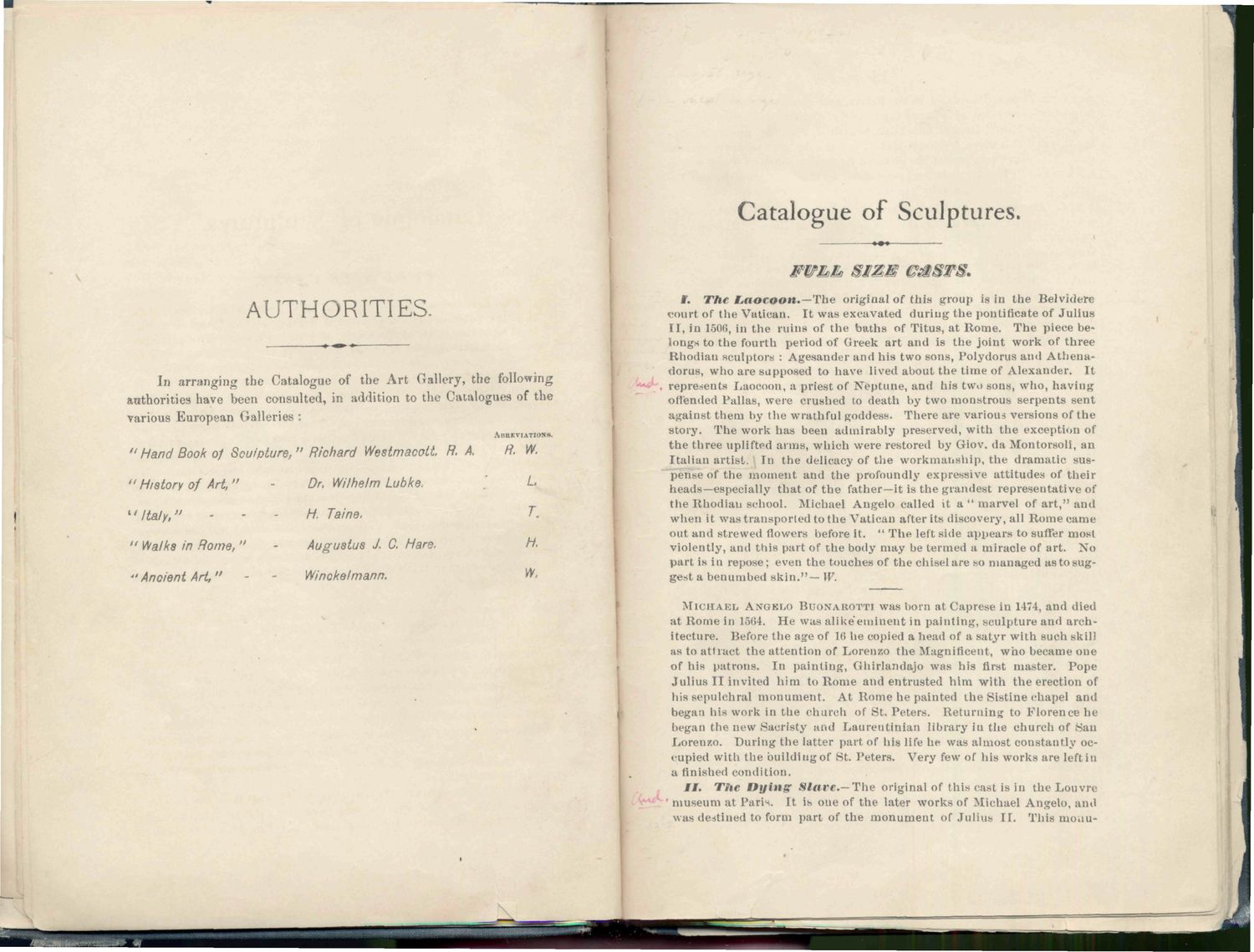| |
| |
Caption: Book - Gregory Art Collection Catalog (Gregory)
This is a reduced-resolution page image for fast online browsing.

EXTRACTED TEXT FROM PAGE:
Catalogue of Sculptures. •»• FW&& SIZE G&SPS. AUTHORITIES. In arranging the Catalogue of the A r t Gallery, tbe following authorities have been consulted, in addition to the Catalogues of the various Europsan Galleries : " Hand Book of Sculpture, " Richard Westmacott. R. A. "History " Italy," " Walks in Rome, " "Ancient Art," of Art," Dr, Wilhelm Lubke. H. Taine. Augustus J. C. Hare, Wlncke/mann, R. W. L T. H. I . The, hnoroan. -The original of this group is in the Belvidere court of the Vatican. It was excavated during the pontificate of Julius I I , in 1606, in the ruins of the baths of Titus, at Rome. The piece belongs to the fourth period of Greek art and is the joint work of three Rhodian sculptors : Agesand«r and his two sons, Polydorus and Athenadorus, who are supposed to have lived about the time of Alexander. It . represents Laocoon, a priest of Neptune, and his two sons, who, having ofliended Pallas, were crushed to death by two monstrous serpents sent against them by the wrathful goddess. There are various versions of the story. The work has been admirably preserved, with the exception of the three uplifted arms, which were restored by Giov. da Montorsoli, an Italian artist. In the delicacy of the workmanship, the dramatic suspense of the moment and the profoundly expressive attitudes of their heads—especially that of the father—it is the grandest representative of t h e R h o d i a u school. Michael Angelo called it a " marvel of art," and when it was transported to the Vatican after its discovery, all Rome came out and strewed (lowers before it. " The left side appears to suffer most violently, and this part of the body may be termed a miracle of art. No part is in repose; even the touches of the chisel are so managed as to suggest a benumbed skin."— W. M ICHABL AKGKLO BuONAEOTT] was horn at Caprese in 1474, and died at Rome in 1664. He was alike'eniiuent in painting, sculpture and architecture. Before the age of 1(1 he copied a bead of a satyr with such skill as to attract the attention of Lorenzo the Magnificent, who became one of his patrons. In painting, fihirlandajo was his first master. Pope Julius I I invited him to Rome and entrusted him with the erection of his sepulchral monument. At Rome he painted the Sistine chapel and began his work in the church of St. Peters. Returning to Florence he began the new Sacristy and Lauren tinlan library in the church of San Lorenzo. During the latter part of his life he was almost constantly occupied with the building of St. Peters. Very few of his works are left in a finished condition. IE. The Itytng Slave.—The original of this cast is in the Louvre ' museum at Paris. It is one of the later works of Michael Angelo, and was destined to form part of the monument of Julius I I . This mo.IU-
| |